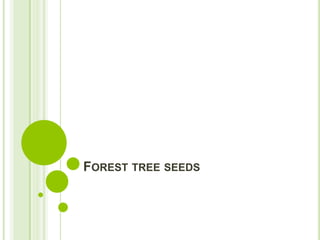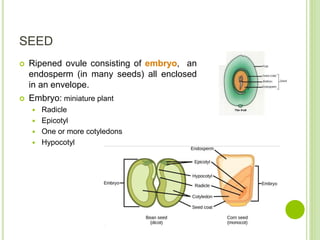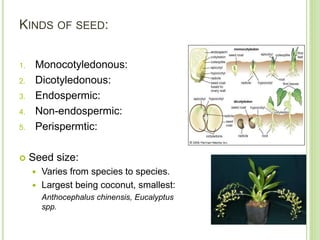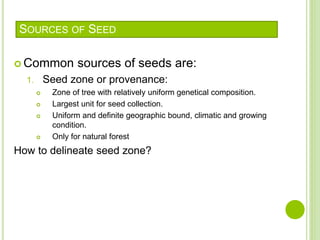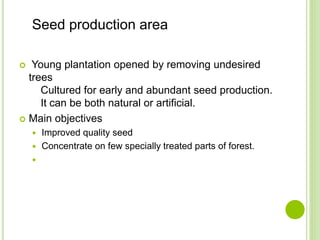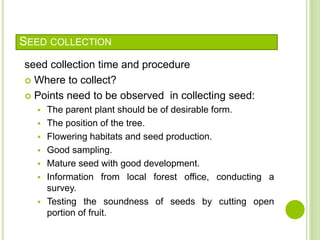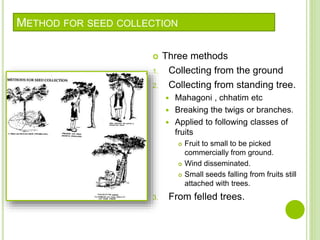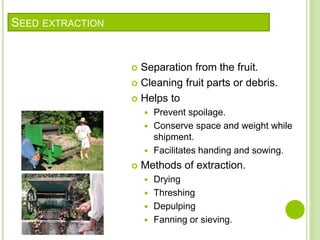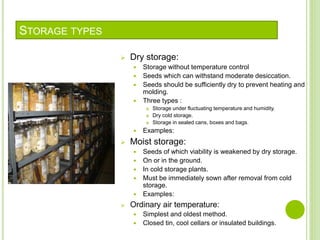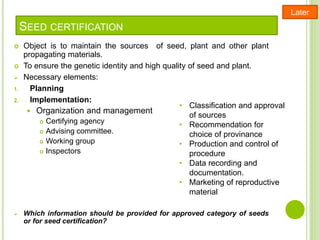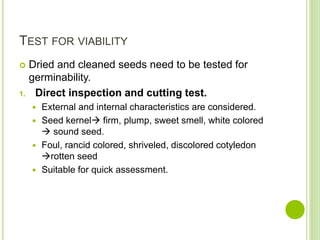This document provides information about forest tree seeds. It discusses the basic structure and parts of a seed, including the embryo, endosperm, and seed coat. It describes different types of seeds and patterns of seed germination. Key factors that influence seed germination like water, temperature, light, and oxygen are outlined. The document also discusses seed dormancy, methods to break dormancy, sources of seeds, seed collection and processing procedures, storage methods, certification, and common tests for seed quality including tests for genuineness, purity, moisture content, and viability.
